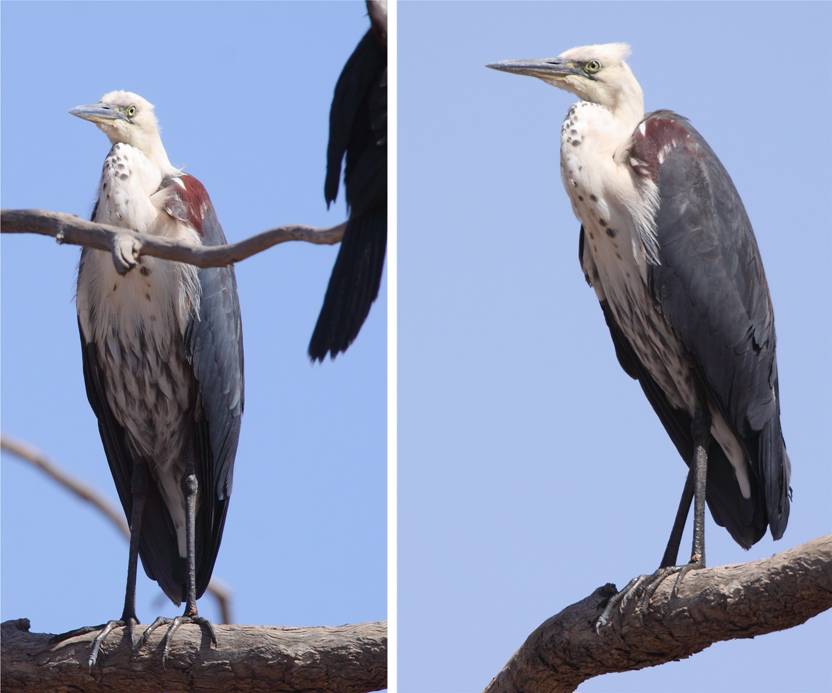The odd one is being reported around about, but it seems
well down in numbers compared to a few years ago when they nested at the big
dam at Mulligans. It was one of the most pronounced decliners in the last
BA atlas. Non-breeding adults have the pronounced large spots down the
throat. I notice that HANZAB expresses some uncertainty over whether
non-breeders retain the brownish-red shoulder patch. On the evidence of
the below bird (not a local one) it seems some do, although it is worth keeping
an eye out for. HANZAB describes that colour as ‘maroon’, a word most
Australians pronounce ‘MARRONE’ as distinct from being stranded on a desolate
island. That pronunciation has some justification as the word comes from
the French ‘marron’ for ‘chestnut’, a rather different colour. It all
comes together when HANZAB notes ‘most scapulars ... maroon when fresh,
slightly more chestnut when worn’.


